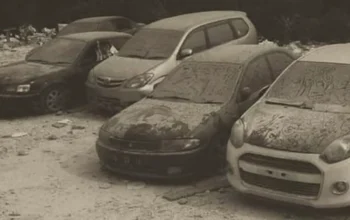If your car has been overheating lately, or you’ve noticed puddles of antifreeze under your vehicle, chances are you need to replace the radiator hose. This pipe is crucial for carrying coolant between the radiator and the engine, keeping everything running at the right temperature. In this guide, we’ll show you how to replace a car radiator hose step by step — even if you’ve never done it before.
This DIY coolant system fix is easier than it looks, especially if you follow safety precautions and have the right tools. By the end, you’ll know how to handle hose connections, avoid leaks, and prevent future overheating.
Table of Contents:
- 1. What Does a Radiator Hose Do
- 2. Signs Your Radiator Hose Needs Replacing
- 3. Get the Right Replacement Hose
- 4. Let Your Car Cool Down Completely
- 5. Drain the Old Coolant
- 6. Remove the Old Radiator Hose
- 7. Install the New Hose
- 8. Refill the Radiator with Coolant
- 9. Check the Bleeding Process
- 10. Final Touches and Cleanup
- 11. When to Ask for Help
- 12. Prevent Future Radiator Hose Problems
- Summary: You’ve Got This
1. What Does a Radiator Hose Do
Your car radiator hose is part of the cooling system that circulates coolant (also called antifreeze) from the engine to the radiator and back. There are typically two hoses: the upper hose and the lower hose. If either one fails, your engine could overheat, causing damage that’s costly to repair.
So, if you’re seeing leaks, getting low coolant warnings, or constantly dealing with an overheating engine, it’s time to check that hose.
2. Signs Your Radiator Hose Needs Replacing
Before you go tearing into your car, here are some obvious signs your radiator pipe may be the culprit:
- Coolant leaking underneath your car
- Hose looks cracked, bulging, or feels squishy
- Engine temperature gauge is spiking
- Low coolant levels despite recent top-offs
If any of these sound familiar, replacing the radiator hose is a solid first move.
3. Get the Right Replacement Hose
First things first: you’ll need the right hose for your car model. Head over to your local auto parts store or check online using your vehicle’s make, model, and year. It’s also smart to grab a pair of new clamps, gloves, safety goggles, and a funnel for refilling coolant later.
Pro Tip: Don’t guess on the hose type. A wrong size can cause poor fitting and leaks.
4. Let Your Car Cool Down Completely
Never work on the cooling system when your engine is hot. Let the engine cool off completely — ideally for a couple of hours. Pressurized coolant can cause serious burns if released when hot.
Once it’s cool, put on gloves and goggles. Safety first, always.
5. Drain the Old Coolant
- Pop the radiator cap.
- Place a pan under the radiator to catch old coolant.
- Open the radiator drain plug (usually at the bottom) and let the coolant drain out.
- Once done, close the drain plug.
⚠️ Dispose of old coolant properly — it’s toxic to animals and harmful to the environment.
6. Remove the Old Radiator Hose
Now it’s time to get the old coolant hose off:
- Move your drain pan under the hose connections.
- Use a screwdriver to loosen the clamp on the lower end of the hose. Gently twist the hose to break the seal.
- Repeat the process for the upper end.
- Carefully remove the hose. Expect a little leftover coolant to spill out.
Take your time. Forcing the hose off might damage the radiator or engine fitting.
7. Install the New Hose
Ready for the reverse process? Here’s how to install the new hose:
- Slide on the new clamps (don’t tighten them yet).
- Attach the new radiator hose to both the radiator and engine fittings.
- Once it’s in place, tighten the clamps securely. They should be snug but not crushing the hose.
A solid connection is key — loose clamps can lead to leaks.
8. Refill the Radiator with Coolant
With the new hose installed:
- Use a funnel to pour new coolant into the radiator.
- Check your owner’s manual for the right coolant type or mix.
- Some vehicles may require you to open a coolant bleeder screw to release trapped air.
⚠️ Air bubbles in the system can lead to overheating again — make sure to bleed it if needed.
9. Check the Bleeding Process
Not all cars are the same. Some models need the engine running with the cap off to burp out air. Others require the cap to be sealed before starting the car.
Refer to your owner’s manual to be sure. If you’re unsure, it’s better to double-check than risk another overheat.
10. Final Touches and Cleanup
Once everything’s back in place:
- Reattach any splash guards you removed
- Close the hood
- Top off your overflow tank with coolant
- Start the car and watch for leaks
Let the engine reach normal temperature and check the hose connections. If everything’s dry and your temp gauge stays steady, you’ve done it!
11. When to Ask for Help
This DIY fix is doable for most people, but if you hit a snag — like a stuck hose or a missing part — don’t hesitate to ask for help. Your local parts store or mechanic can offer advice, and there are tons of helpful videos online.
Fixing your radiator hose isn’t just about saving money — it’s about understanding your vehicle and gaining confidence in your repairs.
12. Prevent Future Radiator Hose Problems
Here’s how to keep your radiator pipe and cooling system in good shape:
- Inspect hoses every oil change
- Look for cracks, bulges, or leaks
- Replace hoses every 4–5 years or as recommended
- Use the right coolant type always
Staying on top of this small maintenance can save you from big headaches down the road.
Summary: You’ve Got This
Replacing a car radiator hose may sound intimidating, but it’s a simple job if you take it step-by-step. From spotting the issue to installing the new coolant hose, this guide has walked you through everything you need to know. Just remember to follow safety tips, use the right tools, and double-check connections.
Next time your engine starts to overheat, you’ll know exactly where to look — and how to fix it fast.






